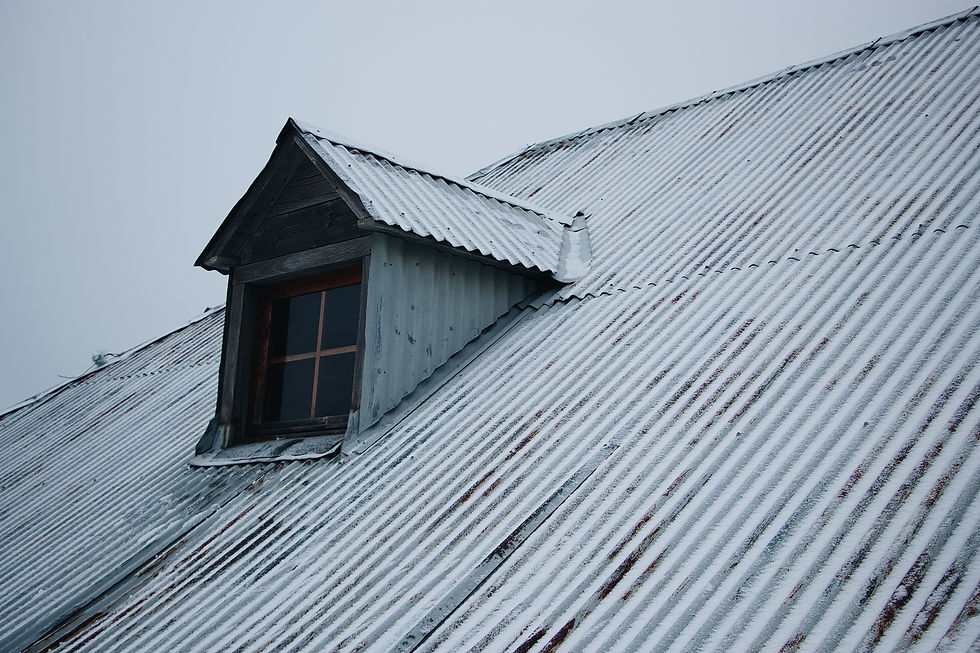💡 The Missing Link: How Evaporation Reduces Urban Energy Demand
- Melanie Galpin

- Aug 21
- 3 min read

As cities battle rising temperatures and growing energy costs, one truth is becoming undeniable: cooling our buildings is consuming more and more power.
By 2050, the International Energy Agency predicts that energy use for space cooling will more than triple- placing massive strain on electrical grids, increasing emissions, and widening inequality in climate resilience.
But what if the answer to this crisis was not more machines- but more evaporation?
At WaterRoofs, we believe one of the most underused energy-saving tools in urban design is passive evaporative cooling. Our roofing system brings this principle back to the city- and the results go far beyond comfort.
🌡️ Air Conditioning’s Climate Cost
Traditional cooling technologies like air conditioning have serious environmental tradeoffs:
Buildings account for 40% of global energy demand- a large portion for cooling alone (IEA).
Electricity used for air conditioning is still often fossil-fuel based, especially during peak summer loads.
Cooling creates heat islands of its own: AC units dump hot air outside, further warming streets and neighboring buildings.
The poorest urban residents- often in poorly insulated homes- suffer most from both the heat and the rising energy bills.
Cooling the indoors by heating the outdoors is not a sustainable loop.
💧 How WaterRoofs Reduces Cooling Demand
Evaporative cooling is nature’s most efficient form of thermal regulation. By enabling water to evaporate slowly from surfaces, ambient temperatures drop- no fans, no compressors, no emissions.
WaterRoofs uses this principle in every tile:
Rainwater is stored in integrated micro-grooves across the tile surface.
This water evaporates gradually under sun exposure, cooling the tile and the surrounding air.
As a result, the rooftop- and the building below- stay cooler for longer.
Performance tests and real-world pilots show:
✅ Lower rooftop surface temperatures by 5–15°C
✅ Reduced indoor cooling demand by up to 20% in summer months
✅ Less need for energy-intensive systems during heatwaves
And unlike traditional air conditioning, WaterRoofs doesn’t generate waste heat- it actually contributes to a cooler local climate.
🏙️ Rewriting the Urban Energy Equation
In the context of energy crisis, evaporative architecture offers three critical advantages:
Passive Performance WaterRoofs operates without electricity- making it resilient during power outages, grid failures, or in off-grid housing.
Peak Load Shaving By reducing the intensity of heat entering buildings, WaterRoofs lowers energy demand during peak hours- easing pressure on the grid.
Scalable Retrofitting Because the system is lightweight and modular, it can be added to existing rooftops, especially in cities where green or wet roofs are not viable.
The potential is massive: if just 10% of European rooftops adopted WaterRoofs-style evaporative layers, cooling energy savings could reach hundreds of GWh per year.
🔄 Water, Energy & Climate Justice
Access to cool indoor environments is increasingly a human right. Yet it’s one not equally shared:
Older, less insulated homes bear the brunt of overheating.
Poorer neighborhoods often lack greenery or passive cooling.
Air conditioning is expensive to run- and often out of reach for vulnerable populations.
WaterRoofs offers a low-energy, low-cost, and climate-aligned alternative- empowering municipalities to offer better housing performance without building entirely new infrastructure.
⚡ Toward a Cooler, Smarter City
When cities invest in climate resilience, they often focus on trees, insulation, or technology. But they forget one of the simplest solutions of all: bring back evaporation.
WaterRoofs isn’t just about design- it’s about rewriting the relationship between heat, water, and energy.
It’s a shift from extraction to restoration. From cooling inside to cooling everywhere.
📩 Let’s Build Cooler Cities
WaterRoofs is available for:
Urban heat mitigation strategies
Energy-positive retrofits
Affordable housing programs
Sustainable building partnerships
Explore the full evaporative energy impact at:



Comments